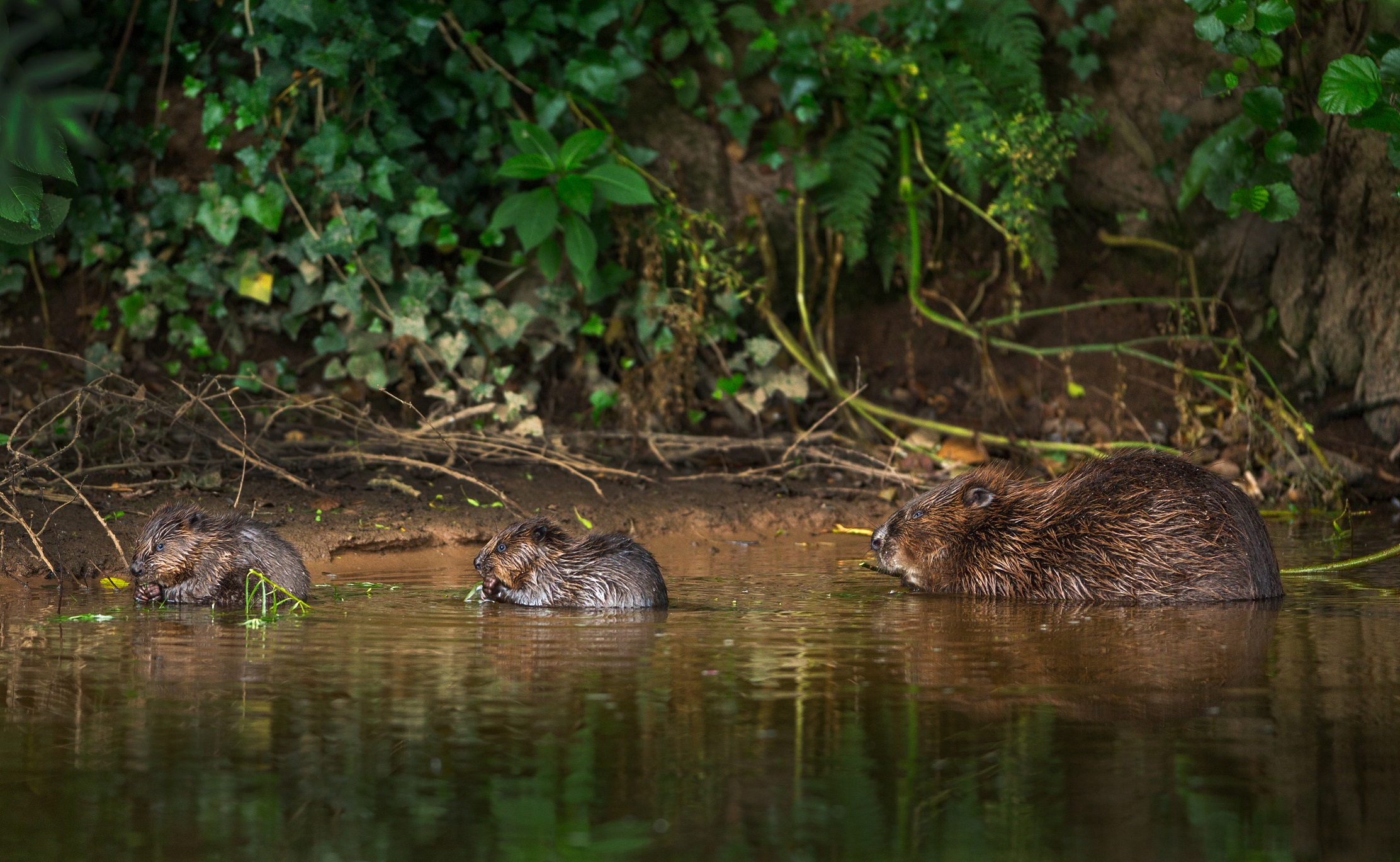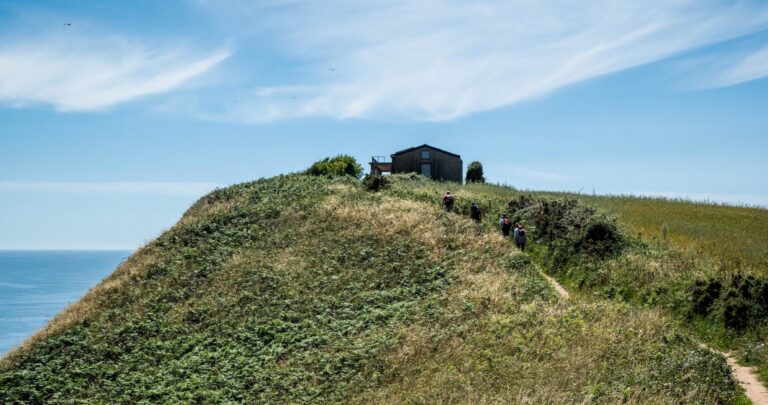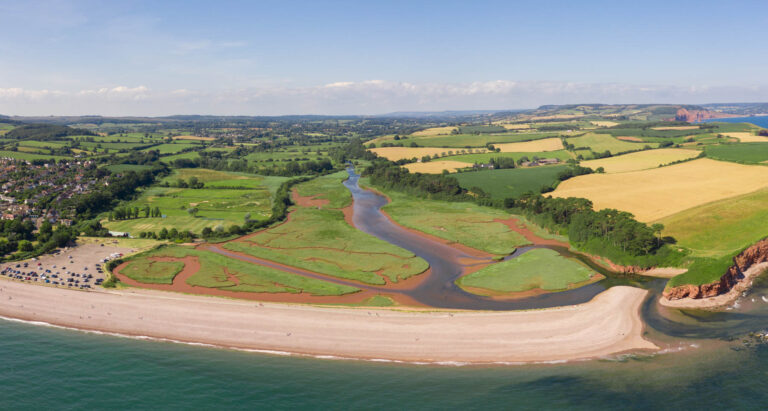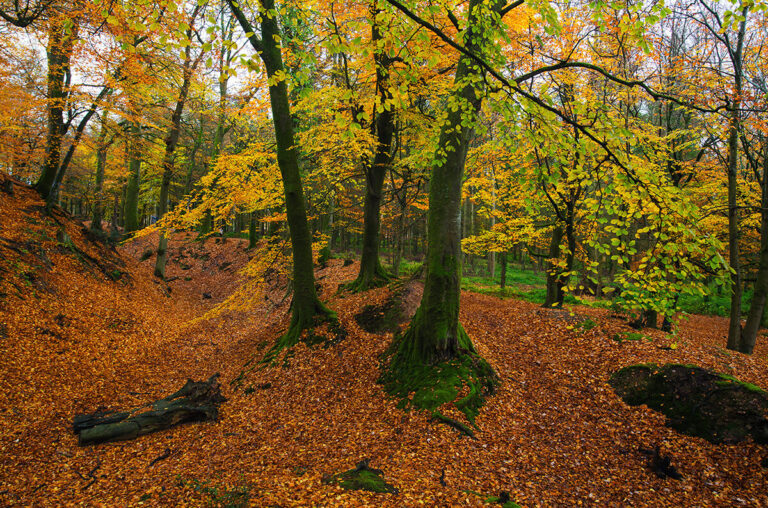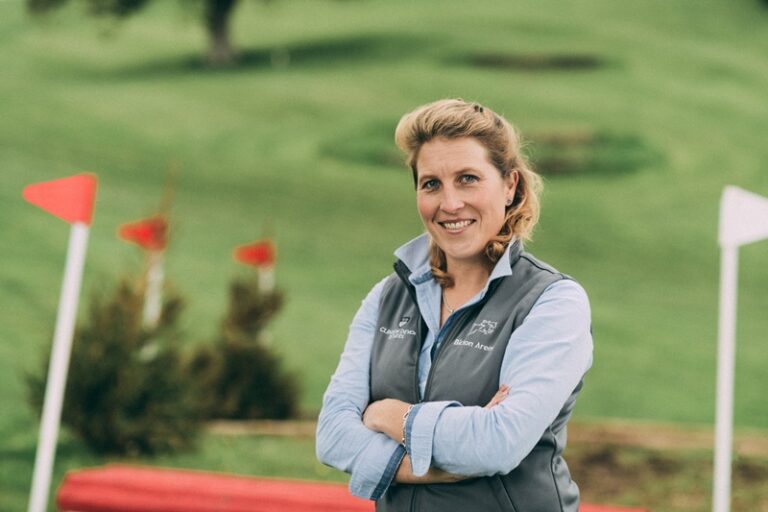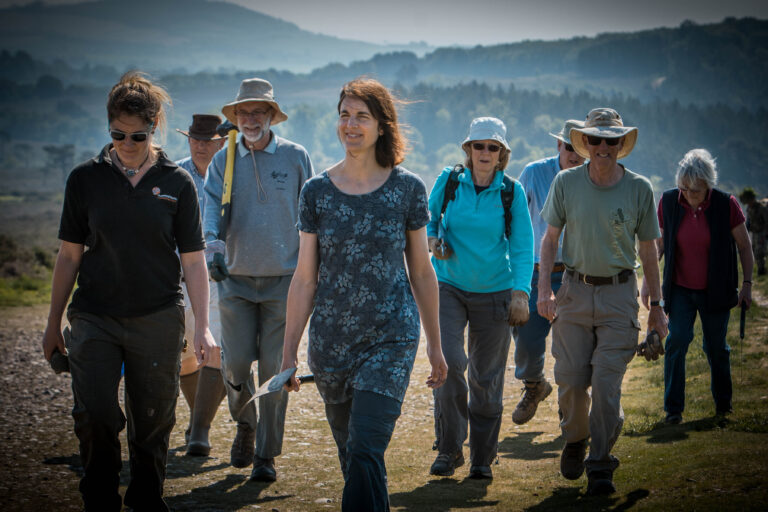Devon beavers highly commended in British photography award
In the fading light of evening along a quiet stretch of a Devon river, a mother beaver and her kits paused to enjoy their willow bark supper just long enough for the intimate moment to be caught on camera.
The enigmatic image was taken by acclaimed wildlife photographer Matthew Maran, who had been lying in wait along the grassy banks of the River Otter near Budleigh Salterton to capture the behaviour of the beavers for a wildlife prospectus commissioned by landowner Clinton Devon Estates.
The photograph has been highly commended in the Habitats category of the 2018 British Wildlife Photography Awards.
The year-long project saw Maran documenting habitats across East Devon including the East Devon Pebblebed Heaths, one of Britain’s most threatened landscapes, home to 3,000 species of flora and fauna. The Estates, whose history in Devon dates back 400 years, commissioned Maran to illustrate Space for Nature which outlines their commitment to improving the habitats and supporting the wildlife under their stewardship.
Maran, 41, captured the image at 7pm on July 28, 2016. The magic moment came 45-minutes into his tenth visit to the riverbank. “I’d walked up and down the river to photograph other aspects of the habitat a lot, and I’d always stop to try and see the beavers,” recalled Maran. “That evening, right up until that moment, they were moving around quite a bit. The mum was quite active gathering food – she had five kits in total to feed, but I never saw all five together.
“They were busy, doing their beaver thing, snacking on willow and diving down. Whenever mum came back with a willow branch she would either dive down to her other kits or bring it back to the bank where these two were waiting. When she wasn’t there, the kits would disappear off. So when they were all lined up like this, it was a wonderful, peaceful moment to capture.
“To watch animals behaving naturally is a real privilege,” continued Maran. “As a nature photographer you want to capture animal behaviour and show intimate moments, and from a conservation perspective, if you want people to engage with your images, there has to be that connection. The mother beaver feeding her babies made it easy to relate to.
“I’ve been to Canada and Alaska taking photographs of beavers in the wild but I’ve never seen a mum with five kits,” added Maran. “It’s so interesting that, even though people walk their dogs so close by and so many people stop to watch them, their East Devon habitat is good enough for a beaver to raise her young. This is quite extraordinary.”
Beavers were discovered on the river near Ottery St Mary in 2008, the first breeding wild beavers to be found in England for 400 years. How they got there remains a mystery. In 2014 Natural England approved a five-year monitoring trial of the beavers led by the Devon Wildlife Trust and supported by Clinton Devon Estates, Exeter University the Royal Zoological society of Scotland and Derk Gow Consultancy Limited. It following a local community campaign against government plans to have them removed. There are now eight family groups living along the river.
Maran worked closely with Dr Sam Bridgewater, Head of Biodiversity and Conservation at Clinton Devon Estates to deliver the project, having just 50 days to bring it to life – 35 days for photography and 15 days for the design and production of the prospectus – spread out over a year from June 2016.
The beavers occupy only a small section of the prospectus which the Estates wanted to produce to ensure that the wildlife and habitats under its care are not only conserved, but enhanced through its business activities, for the nation. The book not only catalogues the landowner’s conservation areas of greatest significance, including saltmarshes, species-rich grassland and hedgerows, but also outlines key priority species such as the cirl bunting and how the broader landscape can be enhanced for wildlife.
Maran, who lives in Tottenham with his partner and young daughter, hopes other British landowners will follow Clinton Devon Estates’ lead in documenting the natural assets under their care.
“One of the greatest pleasures was working collaboratively with the landowner on such an important conservation project,” said Maran. “One of the first things we did was sit down with an OS map and Sam pointed out the main locations, like where I could find the rare cirl buntings.
“A highlight was photographing Peter Bennet, a retired cabinet maker and volunteer conservationist, whose role includes ringing birds such as reed and sedge warblers. These amazing birds fly to Nigeria in the winter and then return here for the summer. Peter tells landowners where we need more reedbeds to help them flourish. So, I felt like I was part of something that will have a wide-reaching positive impact.”
Maran manages to capture the raw essence of this charming pocket of English countryside through a series of beautiful wide-angle panoramas, interspersed with detailed close-ups of the birds and animals who call it home, including the Dartmoor ponies who help manage the heathland naturally.
The photographer admitted that, in addition to this strategic approach to the project, such as making the most of the soft early evening light, he had a few lucky encounters along the way. “I had been taking photographs of some grasslands near Beer and on my way back along an unmetalled road, a lone roe deer suddenly stepped out onto the path ahead,” recalled Maran. “I carefully put my camera bag down, knowing that any noise could have scared it off, undid the zip, and managed to snap a couple of frames before it wandered off. This was a lovely moment, and totally unexpected.
“I firmly believe in what South African golfer Gary Player once said,” he added. “That ‘the more you practice the luckier you get’; getting this shot was a mixture of things, you definitely need a lot of luck in nature photography, but a lot comes from being patient.”
